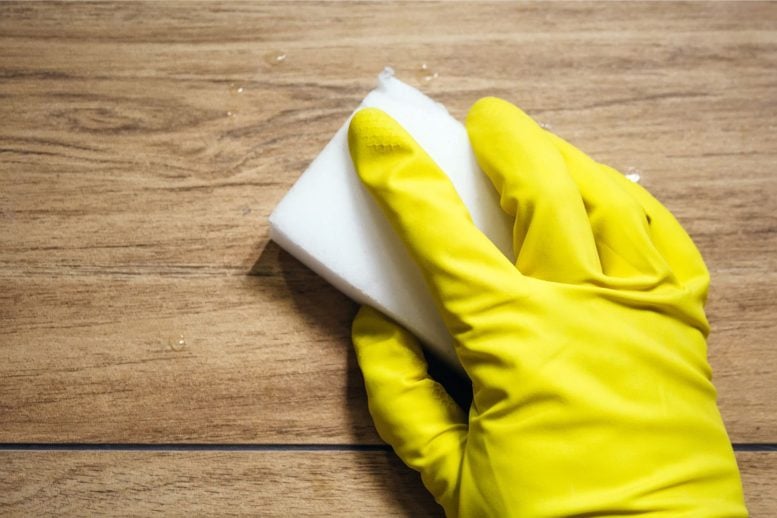 Magic sponges scrub away dirt, while shedding millions of microplastic fibers that end up in the environment. Credit: Stock
Magic sponges scrub away dirt, while shedding millions of microplastic fibers that end up in the environment. Credit: StockMelamine sponges may be magic when it comes to scrubbing away grime, but they’re releasing an invisible mess into the environment—trillions of microplastic fibers every month.
These sponges break down as they’re used, especially the less dense ones, shedding fibers that can make their way into waterways and the food chain. Researchers measured this hidden pollution and sounded the alarm, urging both manufacturers and consumers to change course.
The Hidden Cost of Magic Sponges
If you’ve ever cleaned scuff marks off white shoes or scrubbed crayon from a wall, you’ve likely used a melamine sponge. These sponges are popular for their ability to lift tough stains with just water, thanks to their naturally abrasive texture.
However, despite their cleaning power, these so-called “magic” sponges come with an environmental cost. As they wear down, they release microplastic fibers. According to research published in Environmental Science & Technology by the American Chemical Society (ACS), melamine sponges may be contributing more than a trillion microplastic fibers into the environment each month across the globe.
What Makes Melamine Foam So Effective—And Problematic
The material behind this cleaning tool is melamine foam, made from a type of plastic called poly(melamine-formaldehyde). This polymer forms a web of rigid plastic strands that, when shaped into a sponge, becomes both lightweight and highly abrasive—ideal for scrubbing. But as the sponge is used, the foam gradually breaks apart, shedding microplastic fragments that can be carried into wastewater systems. These fibers can eventually reach natural ecosystems, where they may be consumed by animals and enter the food chain.
To better understand this issue, researchers Yu Su, Baoshan Xing, Rong Ji, and their team investigated how the sponge’s foam density and the texture of the surfaces it is used on influence how quickly the material deteriorates and how many microplastic fibers it releases.
Millions of Fibers from a Single Sponge
The team purchased several sponges from three popular brands, then repeatedly rubbed them against textured metal surfaces, causing the foam to wear down. They found that sponges made from denser foam wore down more slowly and produced fewer microplastic fibers than less dense sponges. Next, the team determined that a single sponge releases approximately 6.5 million fibers per gram of worn-out sponge and assumed that all sponges sold, on average, are worn down by 10%. To get a rough idea of how many fibers could be released per month, they looked at Amazon’s monthly sales for August 2023. Assuming these numbers stay consistent, the team calculated that 1.55 trillion fibers from melamine sponges could be released every month. However, this number only takes into account one online retailer, so the actual amount could be even higher.
Reducing the Damage: What Can Be Done?
To help minimize the emission of microplastic fibers, the researchers recommend that manufacturers create denser, tougher sponges that are more resistant to wear. Additionally, they suggest that consumers opt for natural cleaning products that do not use plastics and recommend installing filtration systems to capture sloughed-off microplastic fibers either in the home or in wastewater treatment plants.
Reference: “Mechanochemical Formation of Poly(melamine-formaldehyde) Microplastic Fibers During Abrasion of Cleaning Sponges” by Yu Su, Chenqi Yang, Songfeng Wang, Huimin Li, Yiyu Wu, Baoshan Xing and Rong Ji, 6 June 2024, Environmental Science & Technology.
DOI: 10.1021/acs.est.4c00846
The authors acknowledge funding from the National Natural Science Foundation of China and the Key-Area Research and Development Program of Guangdong Province.
A version of this article was originally published in June 2024.
Never miss a breakthrough: Join the SciTechDaily newsletter.
.png)

![AI algorithms is making all products look the same (2021) [video]](https://www.youtube.com/img/desktop/supported_browsers/opera.png)

